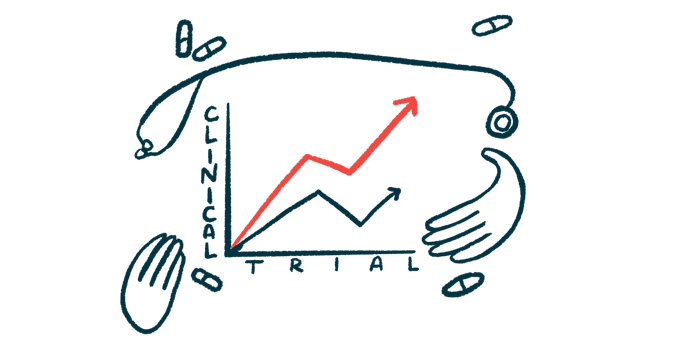Analyses show benefits of DMD gene therapy Elevidys
Sarepta highlights benefits across age groups

The one-time gene therapy Elevidys (delandistrogene moxeparvovec-rokl) was associated with stabilizations in motor function for boys with Duchenne muscular dystrophy (DMD) who were treated when they were 8 to 9 years old, according to new trial analyses.
Boys with DMD at this age are typically expected to show functional declines, and these data from the Phase 3 EMBARK clinical trial (NCT05096221) are the first to demonstrate stabilization or slowing of disease progression in this group, according to Elevidys’ developer Sarepta Therapeutics.
The findings were presented at the American Society of Gene & Cell Therapy annual meeting held May 13-17 in New Orleans.
“The latest data from the EMBARK study highlighting motor function improvements in 8- and 9-year-old boys is encouraging and adds to the growing body of evidence supporting Elevidys,” Aravindhan Veerapandiyan, MD, associate professor at the University of Arkansas and a pediatric neurologist at Arkansas Children’s Hospital, said in a company press release.
DMD gene therapy shows promise in younger patients
Sarepta also shared new biomarker data from the Phase 1b ENDEAVOR trial (NCT04626674) that could back an application to the U.S. Food and Drug Administration (FDA) seeking a label expansion for the gene therapy to include children younger than 4.
Elevidys is fully approved for people with DMD ages 4 and older who are ambulatory (able to walk), and conditionally approved for patients who can’t walk.
“The strength of the biomarker results that we are seeing in younger patients is extremely encouraging and we have a meeting with U.S. FDA next month to discuss expanding the Elevidys label to include younger patients,” Louise Rodino-Klapac, PhD, Sarepta’s chief scientific officer and head of research and development, said in a separate press release.
People with DMD produce little to no dystrophin, a protein important for muscle health, due to mutations in the DMD gene. Elevidys is designed to address this root cause of DMD by delivering to muscle cells a gene encoding production of a shortened but functional dystrophin protein (micro-dystrophin) via a one-time infusion into the bloodstream.
The EMBARK study enrolled more than 120 boys with DMD, ages 4-7, who were randomly assigned to receive an infusion of Elevidys or a placebo and were followed for one year. The boys given the placebo were the switched to the DMD gene therapy, and vice versa, and all were followed for another year.
The study’s main goal was to evaluate changes in scores on the North Star Ambulatory Assessment (NSAA), a standardized measure of motor function in ambulatory children with DMD, after the first year.
EMBARK failed to meet its main goal, but boys given Elevidys did exhibit improvements relative to those given the placebo in other measures of motor function, with MRI analyses also suggesting the treatment may have slowed muscle degeneration.
After two years, boys who initially received Elevidys were still seeing motor improvements relative to an external control group of boys with DMD who did not receive any disease-modifying treatment. Those who had switched from the placebo a year after their own dosing had also started seeing functional gains.
Significant motor gains seen for those treated at 8-9
While all boys in EMBARK were 4-7 at the time of enrollment, some boys who first received the placebo were 8-9 by the time they were given Elevidys. The recent presentation included an analysis that looked at data from 14 of these older boys a year after treatment, again comparing them to a matched external control group of boys who received only corticosteroids.
Elevidys-treated boys demonstrated statistically significant and clinically meaningful motor gains relative to the control group across several different motor tests, including the NSAA. In general, boys given Elevidys showed functional stabilizations, while the control group showed declines.
“What stands out is that these patients were treated at an age when motor decline is typically expected in those with Duchenne,” Veerapandiyan said.
Sarepta also recently reported new results from ENDEAVOR, which is evaluating safety and micro-dystrophin levels after a single dose of Elevidys in 55 people with DMD, ages 2 and older, including both ambulatory and nonambulatory participants.
In six ambulatory children who were 2 at the time of treatment, average micro-dystrophin levels in muscle tissue reached 94% of normal after nearly three months, with 80% of evaluated muscle fibers being positive for dystrophin. The most common side effects were nausea and vomiting.
The company had previously shared data from a group of ambulatory ENDEAVOR participants who were 3 at the time of treatment. Results similarly showed that mean micro-dystrophin levels were nearly normal after three months.








